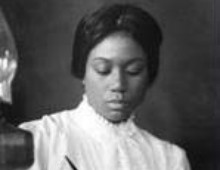Thapelo Mokoatsi
[intro]The duo that was – wordsmith A S Hayes and media entrepreneur C L Stewart – were a force to be reckoned with as they clubbed together to found one of the newspapers that would address socio-political and economic concerns of people classified as coloured by the colonial government in the Cape.[/intro]
The Sun newspaper launched in 1932, was once described by Les and Donna Switzer, as ‘a publication of conservative coloured opinion.’
Furthermore, cited in Local Manufacturing of Skin Lighteners and Divergent Markets (2013), a paper presented by Lynn Thomas at one Wits University seminar, is the fact that the newspaper supported the coloured African People’s Organisation (APO).
APO was born in 1902. It had capitalised on the fact that the South African Moslems’ Association (SAMA), had only focused on mobilising its members against racial segregation. SAMA’s movement was against segregation policies that introduced in urban areas, in specifically Cape Town in 1901.
According to South African History Online (SAHO), leader of the Stone Meetings, John Tobin and an African Methodist Episcopal (AME) preacher, only known as W Collins got together to launch APO that would become the most influential political organisation for coloureds for almost 40 years, and mooted SAMA. APO mobilised the community around issues of education, economics as well as politics.
Stewart, one of the very few black printers in the history of publishing, an entrepreneur whose vision it was to succeed in the cut throat white dominated industry, needed an editorial partner with an understanding of the community issues.
His automatic choice was A.S. Hayes a friend with impeccable grasp of both English and Afrikaans languages, and together they formed a formidable team to launch The Sun. The weekly would publish in both languages.
The Stewart and Hayes partnership would last for four years (1932-1936), during which time they worked hard to sustain The Sun. No one publisher, especially in the early 19th century, understood publishing such as Stewart did.
His clarity about the bifurcate structure of the business was evident as commercialising the asset was on his uppermost list of sustaining The Sun. In fact it is recorded that when the Karoo Company, manufacturer of Freckles and Complexion Cream, wanted to advertise its products on the media platform, The Sun in the form of Stewart was happy to oblige, after all he had a captive audience of between 2 000 and 3 500 readers. The publication ran the first Karoo’s advertisement on 15 September 1933 and another appeared on 19 January 1934.
Stewart would let his partner, Hayes, run the show on the editorial side covering the political thoughts, and cultural events in the Cape community. But running the publication would prove to be a challenge and by 1936, Stewart would sell it to Samuel Griffiths who was ideologically aligned to the United Party. The publication would be owned by the United Party between 1947 and 1950. The party drew its support from English-speaking, Afrikaners and coloured people and used the paper as its mouthpiece whose objective it was to continue racial segregation. The publication would only cease to exist in only 1956.
Stewart, a media proprietor of note would, after handing over The Sun to Griffiths, go on to contend for the attention of the same audience. He launched the Cape Standard in Fish Hoek, Cape Town a year later on Friday,19 February in 1937 – a twelve-page, five column broadsheet hit the streets of Cape Town, its circulation was 8 000 copies weekly. The Cape Standard would exist until 1947.










